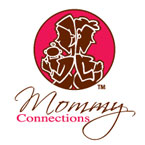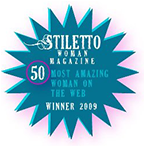Top parenting stories this week
Sore Nipples while Breastfeeding Baby
Nipple pain is the most common complaint among breastfeeding women. Here’s a look at what could be causing your discomfort and how to get relief.
by: Nancy Ripton
Nipple Pain
- It's important to seek help as soon as you begin experiencing sore nipples in order to prevent the situation from getting worse.
- Nipple pain caused by a poor latch is usually immediate and often subsides during feeding.
- If the pain is burning or stabbing and does not decrease as feeding progresses, you may have a yeast infection known as Candida or thrush.
- Vasospasm of the nipple occurs when the nipple turns white and there is a burning or throbbing pain immediately after feeding.
- Chronic nipple pain can be a sign of a new pregnancy.
 espite your best intentions, the stabbing pain in your nipples may make you want to give up on breastfeeding. Nipple pain is the most common complaint among lactating women, but nursing should not be a painful process. "Prolonged stabbing or irritating nipple pain is not normal," says Dr. Christina Valentine, medical advisor for Neonatal Nutrition and Lactation at Columbus Children's Hospital. The earlier you catch a problem, the easier it is to fix.
espite your best intentions, the stabbing pain in your nipples may make you want to give up on breastfeeding. Nipple pain is the most common complaint among lactating women, but nursing should not be a painful process. "Prolonged stabbing or irritating nipple pain is not normal," says Dr. Christina Valentine, medical advisor for Neonatal Nutrition and Lactation at Columbus Children's Hospital. The earlier you catch a problem, the easier it is to fix.
Here are some of the most common causes of nipple pain:
1. A poor latch
Nipple pain caused by a poor latch is usually immediate and often subsides during feeding. It is also extremely common. Getting the right latch should start right from a baby's first feeding. A new mom should ask her caregiver to place her baby on her stomach as soon as she's born. In about 20 minutes, the baby will start to move toward the breast and usually after 40 minutes, she will latch on. "If the baby latches on their own initiative, the mother is less likely to have problems," says Dr. Jack Newman, head of The Newman Breastfeeding Clinic.
To help ensure a proper latch, it's important to make sure the baby is coming at the nipple from an asymmetrical angle so she will not pull down on the nipple. The baby's chin is a great latch indicator–it should bob up and down to show she is getting milk. If not, try gently pushing the chin down so your baby can get more of your nipple in her mouth. The nipple should be completely covered during feeding.
If nothing seems to work, your baby could be tongue-tied. Look to see if her tongue is heart-shaped or if you have trouble fitting your finger under her tongue. A physician can fix the problem with a simple procedure.
Click here for step-by-step instructions on how to get the perfect latch.
2. Candida Pain
If you feel a burning or stabbing pain in your nipple that does not decrease as feeding progresses, it could be a yeast infection known as Candida, or thrush. Yeast grows in warm, dark, moist places that have experienced skin trauma, making nursing nipples a high-risk area. (Some women automatically assume breast pain is due to mastitis, a breast infection usually caused by a plugged milk duct, but instead of a shooting, burning pain, breast pain associated with mastitis often reaches up to the armpit and may be accompanied by red skin on the breast, engorgement or fever.)
To prevent Candida, use washable cotton breast pads instead of plastic disposable brands. Change your nursing bra frequently and keep the area as dry as possible. Moms who are prone to Candida should expose their breasts to air between feedings. "You can also hold a hair dryer about 10 inches from the breast to dry the area before putting your bra back on," says Valentine. Avoid harsh wiping, which can over dry, leading to cracking.
Women don't need to use lotions such as lanolin as a preventative measure, but they can be helpful in soothing Candida. Newman says that creams can be drying and suggests using lanolin or an all-purpose nipple ointment (APNO) instead. The earlier you apply lotion to a crack, the better. Grapefruit seed extract, Calendula ointment or even olive oil may also be comforting. "Anything greasy can often help," says Newman. If the problem persists, consult your doctor, who may recommend genetian violet (a natural, purple solution applied to the nipples and the insides of a baby's mouth) or oral antifungal medications.
3. The Unusual Suspect
If you have corrected the latch and ruled out Candida, you may be experiencing vasospasm of the nipple. This occurs when the nipple turns white and there is a burning or throbbing pain immediately after feeding. Vasospasm is caused by excessive blood vessel contractions due to a change in temperature and needs to be medically managed.
4. A Sign of Something Else
Chronic nipple pain can be a sign of a new pregnancy. If your pain lasts well after a feeding, you may want to take a pregnancy test. There are also some women who worry that nipple pain is associated with breast cancer, but this is extremely rare. "Pain is usually a late symptom of breast cancer and there would be other signs present," says Newman. There is a rare cancer known as inflammatory breast cancer than can look like an infection. If your symptoms are isolated to one breast and do not clear up with regular treatment, you should see a doctor as a precaution.
Meet our Experts:
One of North America’s most respected breastfeeding experts, Dr. Newman is the author of Newman's Guide to Breastfeeding (Canada) and The Ultimate Breastfeeding Book of Answers (United States) and The Latch and other keys to Successful Breastfeeding (ibreastfeeding.com). Dr. Newman’s breastfeeding information is also at drjacknewman.com
Christina J. Valentine M.D.,M.S.,R.D. is the Medical Advisor for Nutrition Services and Lactation Program at the Children's Hospital in Columbus, OH.






